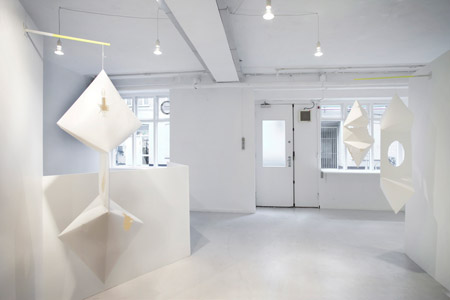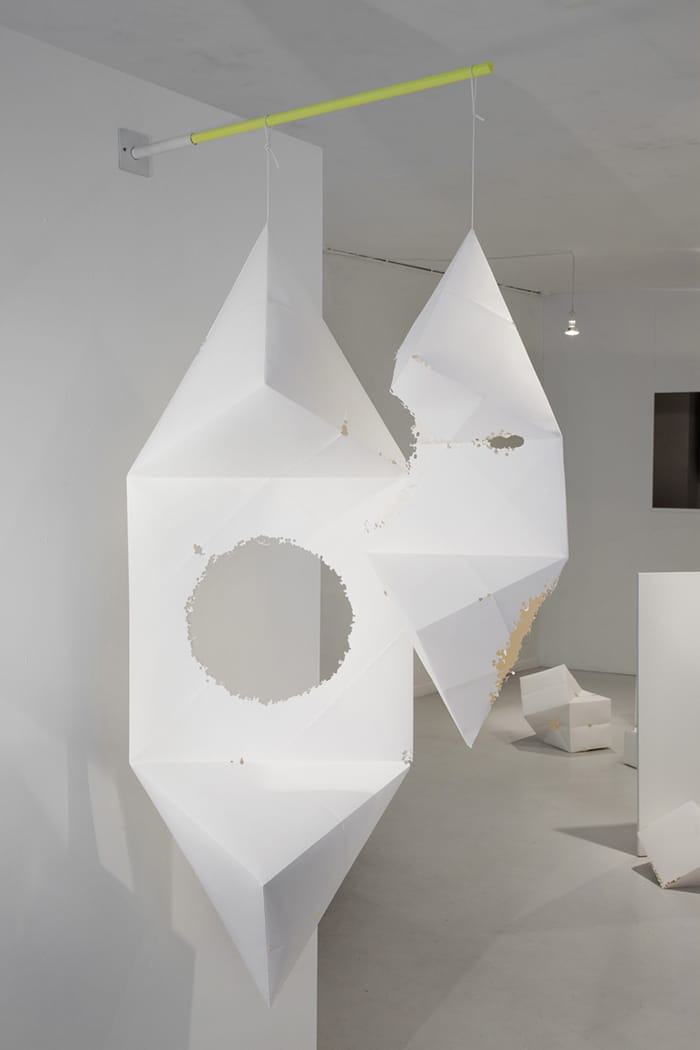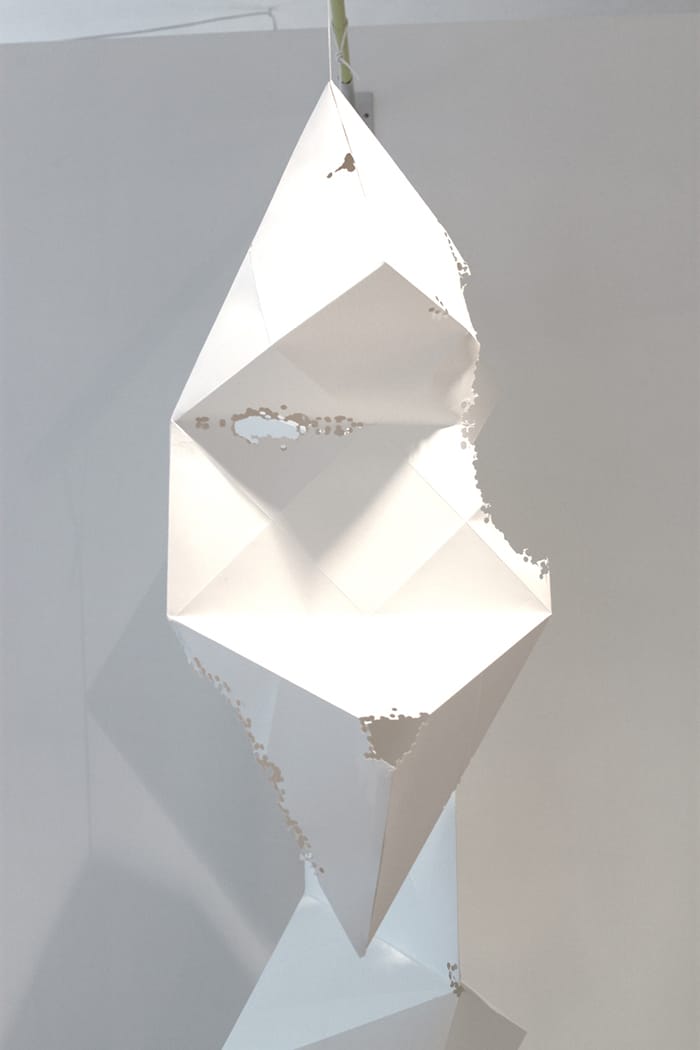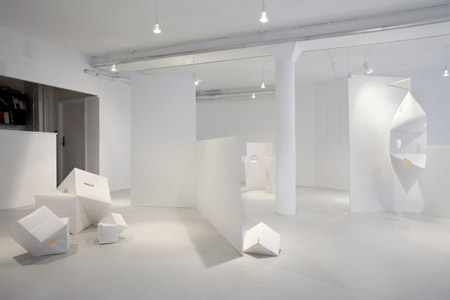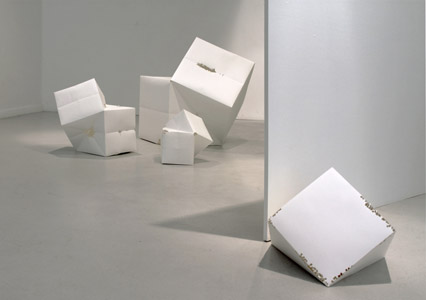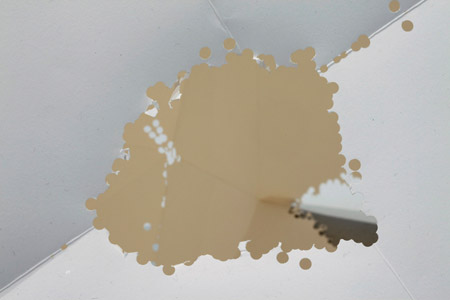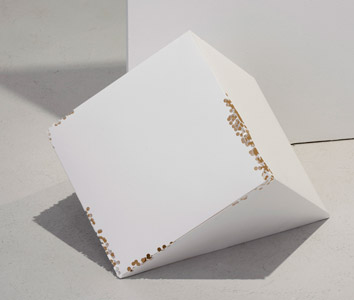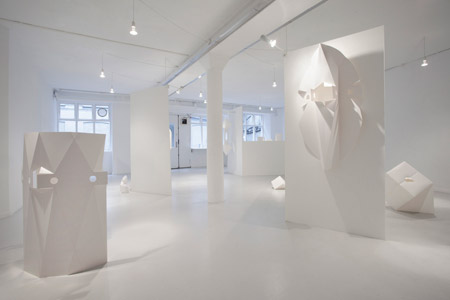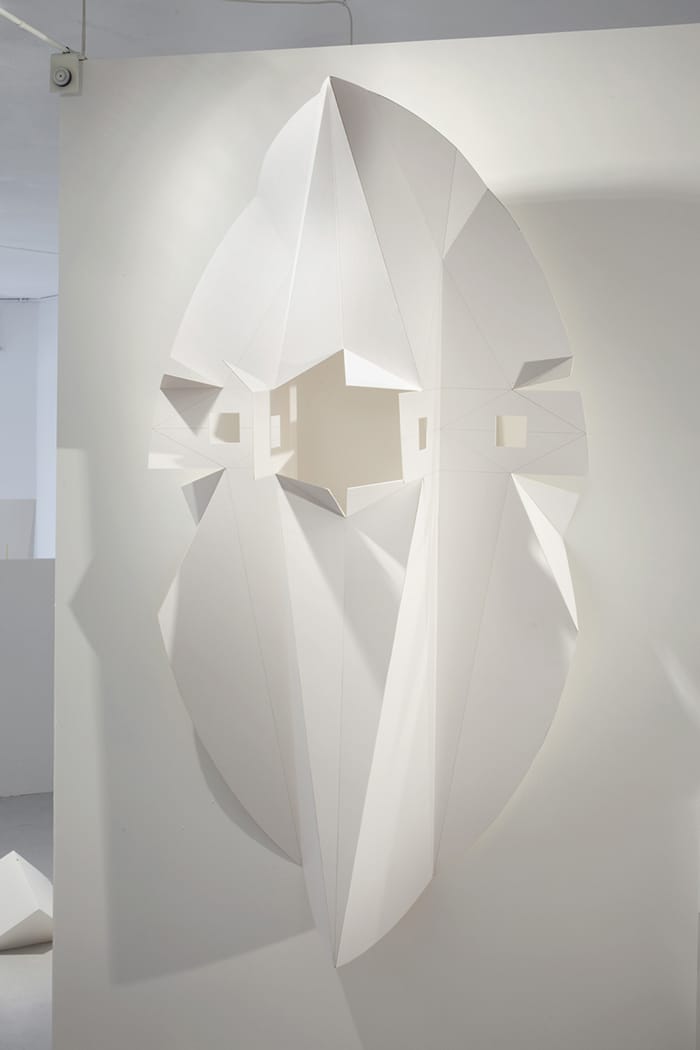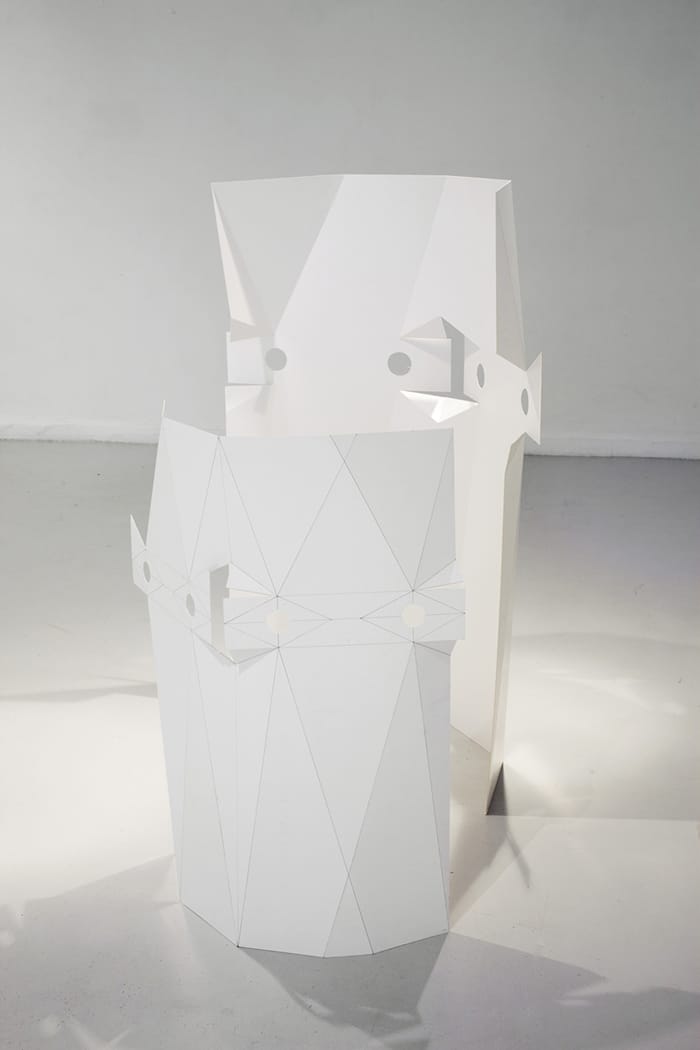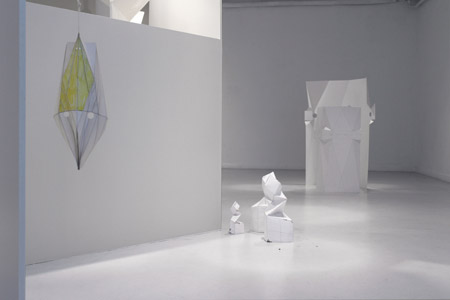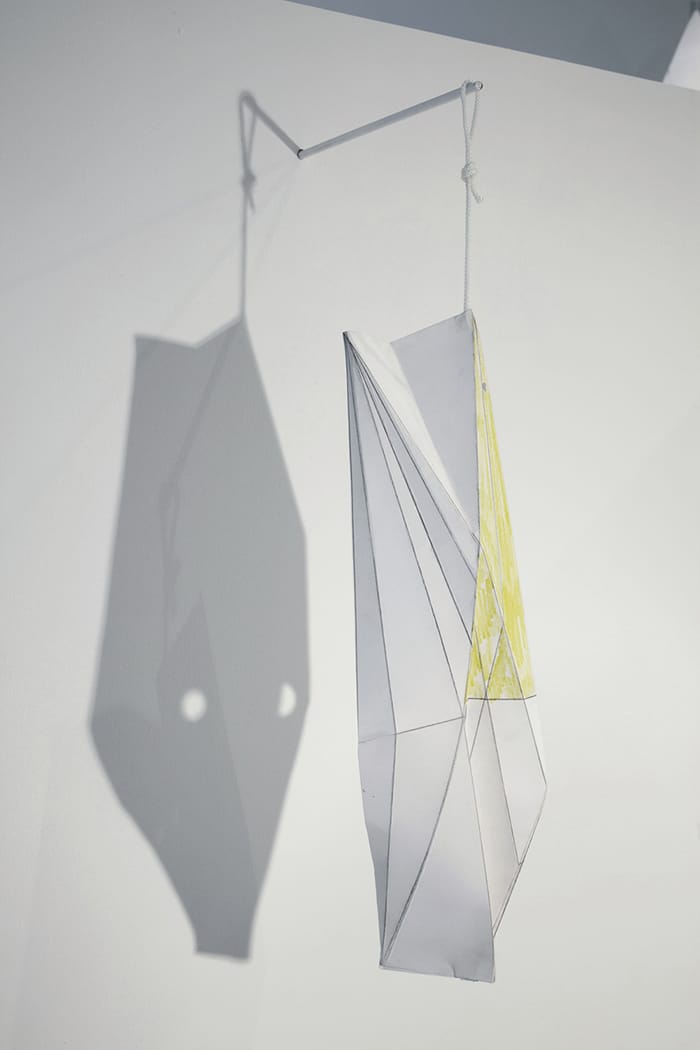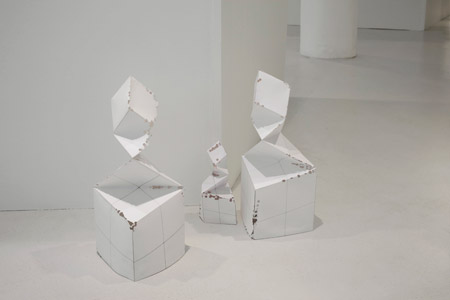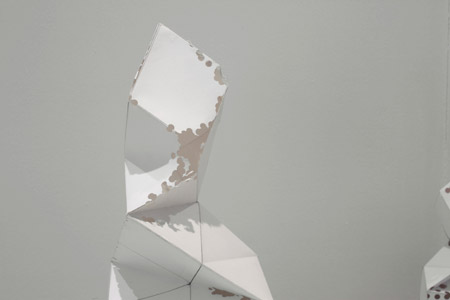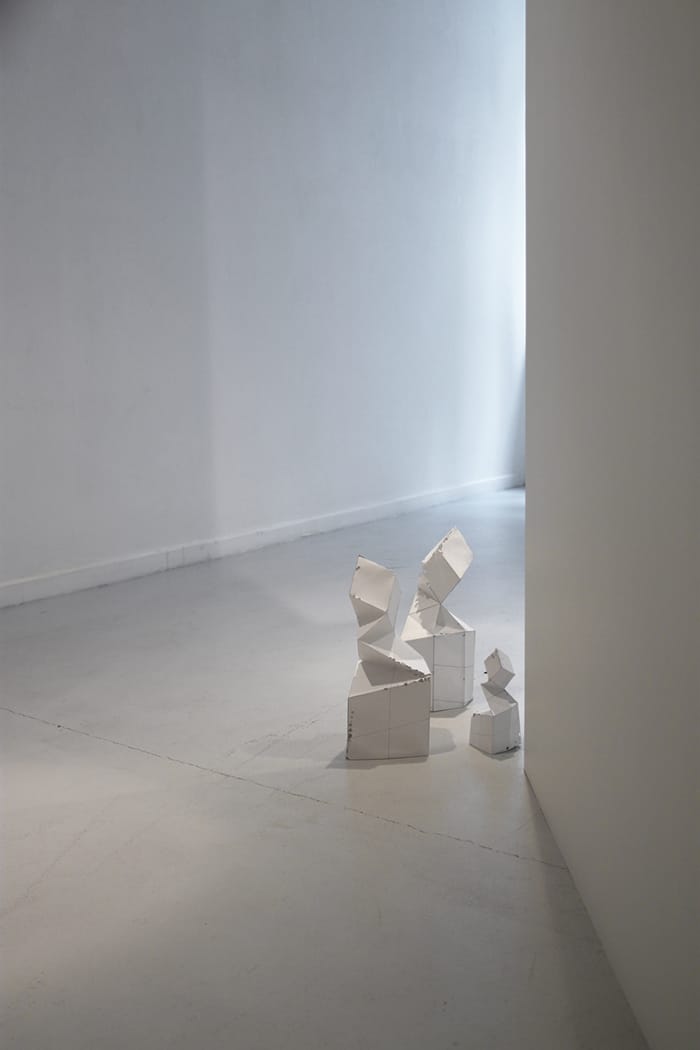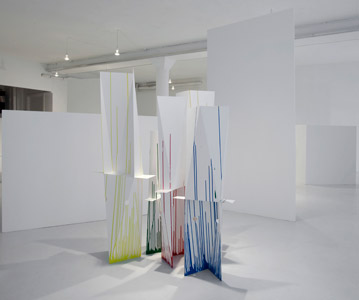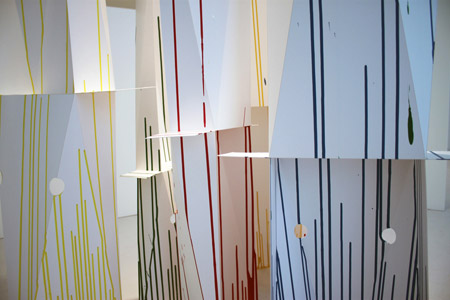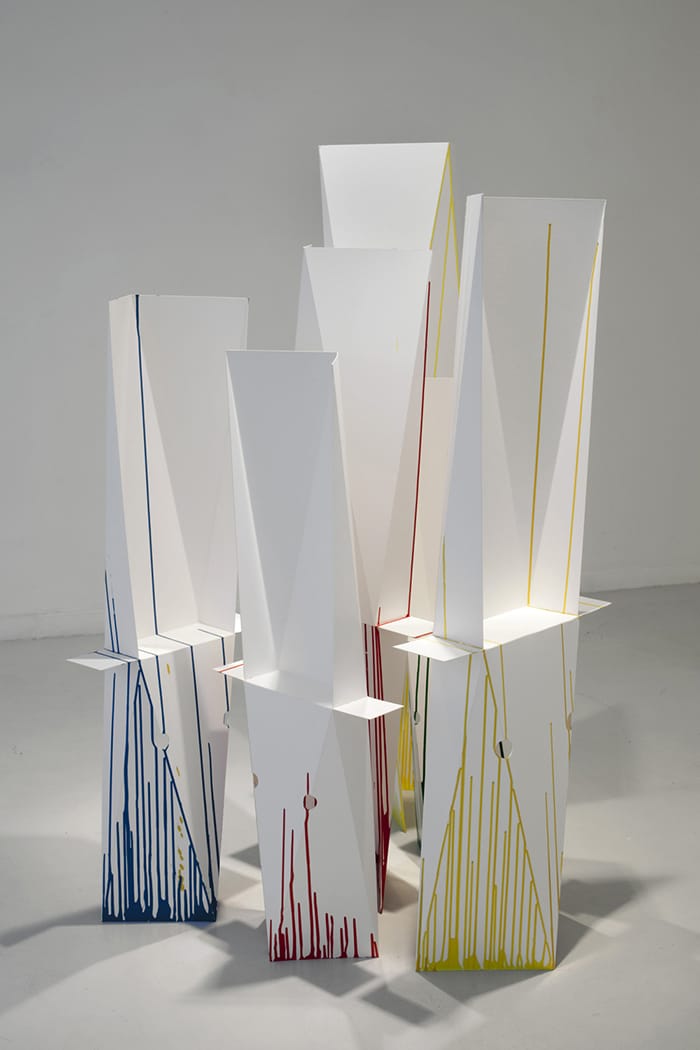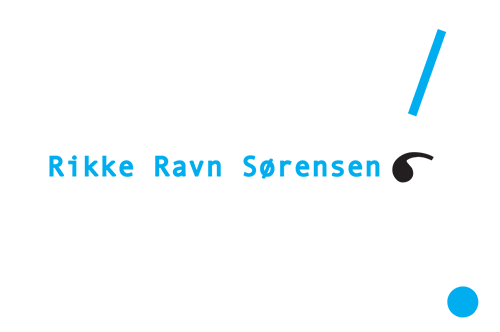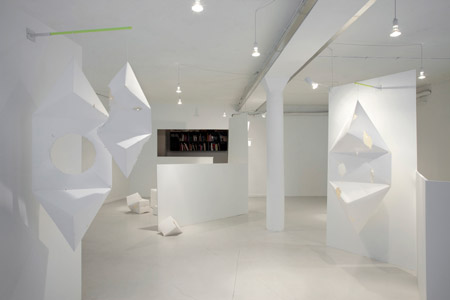
Nye skulpturer.
Skulpturi.dk
2010
Alle skulpturene er lavet i pap eller papir. Hver skulptur er foldet af ét stykke skiltepap eller papir. Hullerne i papirskulpturene er lavet med en kontorhullemaskine. Skillevæggene er lavet af paintply.
Fotograf: Erling Lykke Jeppesen og Rikke Ravn Sørensen
Tak til Statens Værksted for Kunst og Håndværk.
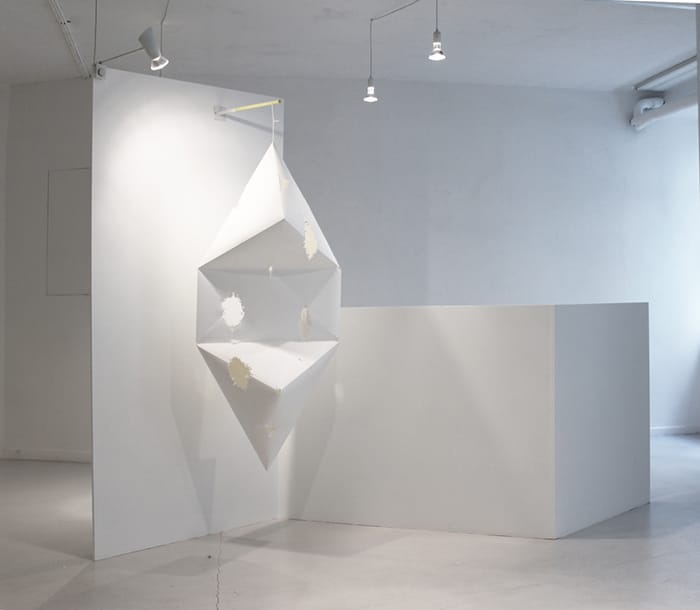
New Sculptures / Skulpturi.dk / 2010
By Magnus Thurø Clausen
Rikke Ravn Sørensen’s new sculptures joints geometric abstraction with the material world in such a way that they are no longer opposites, but part of the same stratified space. At first glance the sculptures are geometric abstractions. Some of them are closed cubical volumes, others are open shells. In all of the works the limits between abstraction and figuration are fluid. Besides their being anchored in geometric idioms they also refer to different specific situations; to architectural models, rooms under construction or deterioration, to African masks and shields.
The sculptures are all made from white sheets of either paper or cardboard which have been creased, folded, fitted together and in some cases partly painted in bright colours. In each sculpture you can trace (through pencil lines, brush strokes etc.) how it has been constructed and in your mind fold the shape back to its point of departure, the white sheet of paper. This accentuation of the making is another way of bringing abstraction into a concrete physical situation. Historically the use of paper and cardboard as sculptural materials dates back to early Cubism, e.g. Picasso’s folded musical instruments or Braque’s cardboard sculptures which have since been lost.
Rikke Ravn Sørensen’s sculptures are clearly in dialogue with these earlier works, although the situation has of course changed a great deal, structurally, conceptually, perceptually, since then.
For instance the shadows cast by the sculptures play a significant role in the perception of the works. They do not simply exist as autonomous physical things, but have an ambiguous double-presence as shadows on both the floor and the surrounding walls. The use of paper and cardboard makes the works light and frail and makes it evident that their presence is conditioned by external factors; the premises presented by a given space at a given time. Their mass has been radically reduced. They have no core. You can look straight through them due to the holes in the surfaces. In the sculptures that resemble masks the holes take on the character of eyes, making them carriers of their own gaze and a framework for ours. In the closed volumes it is rather the act of making the holes that is accentuated. The holes (made with a hole puncher) eat away at the objects as a kind of virus, undermining the unity and symmetry of the shape. The abstract cubes and surfaces are made into tangible, de-idealized things through figuration, process, colour, holes, shadows and the frailty of the materials - at the same time as they are still autonomous things. A proposal for a democratic abstraction…
